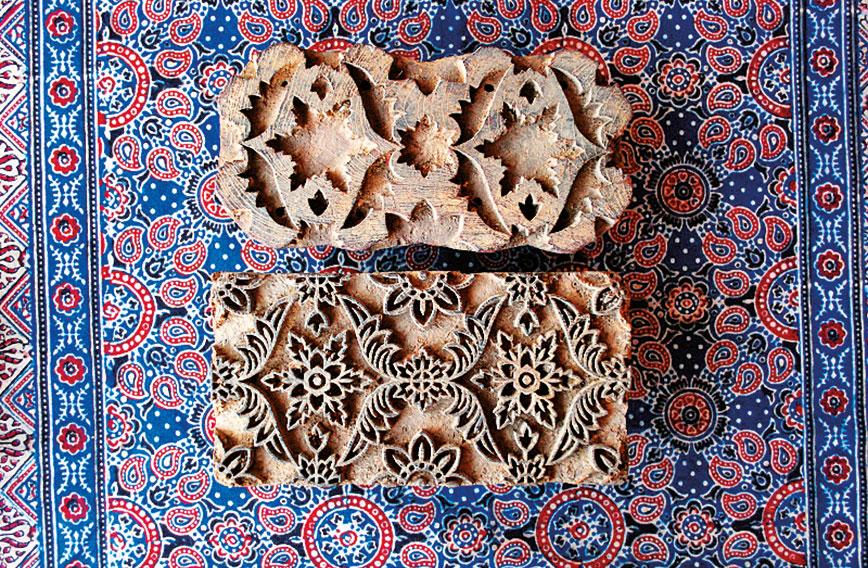-
Ladakh line: Products from the mountains
FROM HILLTOP FARMS Rinchen Youdol’s company, Reetsot, sells a variety of organic foods. There’s a ...
Read More
-
Colourful metalware, ethnic weaves and more
METALWARE IN MANY SHAPES AND COLOURS Chinar Valley Arts is a home décor enterprise founded ...
Read More
-
Give with heart: Some gems from small producers
Terracotta beauties Mansi Verma's stall sells a delightful jumble of things you’d love to take ...
Read More
-
Smart snacks and heavenly sweets
Do you begin dreaming of spicy samosas and syrupy jalebis when you’re hungry? Banish the ...
Read More
-
A gift of rice
From Onam to Pongal is the festive season when we meet and greet friends and ...
Read More
-
Mahua for health and wealth
Mahua for health and wealth The versatile mahua tree is a gift from nature. It ...
Read More
-
Fabric from plants and flowers
Fabric from plants and flowers Anuradha Singh is an expert in eco-printing, a method by ...
Read More
-
Dolls to remember
WHAT’s a doll with a past? A heritage doll. Meet queen Gowdung Rani, fearsome female ...
Read More
-
Introducing arts and crafts from all over India
Small producers and artisans need help to reach out to sell their wonderful products. They ...
Read More
-
Neem tableware
The wondrous neem tree is famous for its many medicinal qualities. While neem leaf and ...
Read More
-
Goatskin guitar
Tsering Angchuk is a musician from Changtang in Ladakh. Sitting inside his stall at Dilli ...
Read More
-
Snow leopards, yaks
Have you seen animals from snowy Ladakh in warm Delhi? Of course not. But you ...
Read More
-
Painting the jungle
Baiga art is bright and beautiful and looks fabulous on a wall. “It’s our traditional ...
Read More
-
Northeast specials
Fear not the big bad city. Armed with the world’s hottest chilli, the famed bhutjholokia ...
Read More
-
Art in every corner
Some Fine Handicrafts has tables, trays, lamps and furniture with beautiful art work. You can ...
Read More
-
Coconut medley
Rabiah is an NGO which sells a range of coconut products. There is coconut milk, ...
Read More
-
Terracotta beauties
Mansi Verma’s stall has a delightful jumble of things you’d love to take home. An ...
Read More
-
Mushroom magic
Add zing to your meals with a spoon of mushroom powder or diced dried oyster ...
Read More
-
Newspaper pencils
Family of Disabled (FOD), an NGO in Delhi, has started a micro-enterprise which makes pencils ...
Read More
-
Leafy plates
Dilseng M. Sangma, an earnest young man from Meghalaya, manufactures plates and bowls from arecanut ...
Read More
-
Salad heaven
Perk up your salads with inventive artisanal dressings you can match with your greens. Arugula ...
Read More
-
Timeless ajrak
It is said that the origins of ajrak, a block-printed textile with rich colours, can ...
Read More
-
Masks with herbs
iVillage, a social enterprise started by Pardada Pardadi Educational Society (PPES), makes masks to suit ...
Read More
-
Native laptop bags
Every season, Arti Gehlot and her team at Kirgiti pick one traditional fabric and learn ...
Read More
-
Stylish Shibori
Ananda makes dresses, blouses, sarees, dupattas and stoles using an exquisite Japanese dyeing technique called ...
Read More
-
Colourful carpets
In Mirzapur, India’s oldest carpet weaving hub, generation after generation is trained to become gifted ...
Read More
-
Carved in stone
Black stoneware from Manipur is attractive, hardy and reasonably priced. You can get earthy coffee ...
Read More
-
Natural cosmetics
Adri Naturals was started by Seema Khurana whose firm belief is that natural products make ...
Read More
-
Kashida threads
Kashmir’s beautiful Kashida embroidery is full of nature imagery and floral patterns. Abdul Rashid Dar’s ...
Read More
-
Honey from Etna
KAVITA Khorana and her husband started Etna in late 2015. They borrowed the name from ...
Read More
-
Cool masks
Face masks are your armour against the deadly coronavirus. Buy a few from the Gulmeher Green ...
Read More
-
Himalayan bounty
The Inhere Aajivika Utthan Samiti (IAUS), an NGO in Almora district of Uttarakhand, runs a successful ...
Read More
-
Unique rice
India is undergoing a rice revolution in long forgotten rice varieties. Farmers are keen to ...
Read More
-
Earthy skin
First Water Solutions offers a range of natural cosmetic products from solid perfumes and face scrubs ...
Read More
-
Sinful chocolate
Handcrafted chocolates taste better and make you feel better. Queen & Bee’s range of tempting ...
Read More
-
Winter knits
Kilmora’s sweaters and mufflers evoke memories of woollens knitted by grandmothers and aunts. The woollens ...
Read More
-
Magic threads
Atiqa is a collective of Afghan women who have found a semblance of home in ...
Read More
-
Chanderi times
A sari mela, organised by Dastkar, brought weavers from all over India to Delhi. Among ...
Read More
-
Mighty flowers
Phool offers luxury incense sticks with the power of flowers. Light one and the fragrance ...
Read More
-
Golden spice
Aranyam Natural Options specialises in turmeric, the super spice that the West has fallen in ...
Read More
-
Natural pads
Koko Girl manufactures inexpensive sanitary pads in very soft, hygienic, organic cotton. The pads feel ...
Read More
-
Paper baskets
Sona Kapoor began making a range of baskets from wastepaper as a hobby some years ...
Read More
-
Art & a story
Patachitra is Bengal’s traditional art of scroll painting, still largely done with natural colours. Patuas ...
Read More
-
Green pencils
Pencils made from recycled newspaper are as good as pencils made from wood. Sturdy and ...
Read More
-




